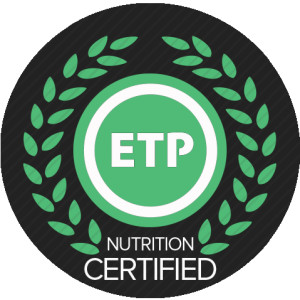Sugar is the leading cause of obesity worldwide, but that’s only the beginning of the health horrors that sugar unleashes on our bodies. It also causes insulin resistance, which can lead to metabolic syndrome and result in cardiovascular disease and type-2 diabetes. Those who eat a lot of sugar are at a much higher risk for developing cancer due to inflammation and the metabolic problems that come with high sugar consumption. Eating a lot of sugar over time may also lead to dangerous belly fat, non-alcoholic fatty liver disease (NAFLD), and serious related health problems.
Experts recommend that women consume no more than five teaspoons (20 grams) of sugar a day. Men should limit their sugar intake to no more than nine teaspoons (36 grams) and children should have no more than 3 teaspoons (12 grams) a day.
Unfortunately, most of us consume way more than that. In fact, Americans eat a staggering 150 pounds of sugar each year on average, equal to about 40 teaspoons per day. If you think that sounds a little too generous, you’ll be surprised to find out where much of that sugar comes from.
Cutting excess sugar out of your diet is essential for a fit body, good health and longevity. These tips for eliminating sugar from your diet will help you make better food choices, as well as help combat irresistible cravings and other symptoms of giving up sugar.
1. Eliminate sugary drinks.
Drinking sugary concoctions overloads the liver, which breaks down the sugar into two simple sugars: Glycogen, which our body produces naturally to help power our cells, and fructose, which our body doesn’t need. The fructose quickly turns into visceral belly fat, which lies behind the abdominal muscles and wraps around nearby organs, and subcutaneous belly fat, which lies in front of the abdominal muscles and is the bane of many existences.
Soda, sports drinks and fruit juices are major culprits when it comes to quickly overloading the liver with sugar and putting on extra pounds. A 12-ounce can of soda contains 10 teaspoons of sugar, while the same amount of pure orange juice has 8 teaspoons. Drinks that are purported to be healthy contain loads of added sugar as well. A 20-ounce bottle of Vitamin Water has 7 teaspoons of sugar, and a 32-ounce bottle of Gatorade contains exactly twice that much.
Instead of soda and sports drinks, train your taste buds and your thirst to enjoy pure water, sparkling water, or green tea, which is packed with cancer-fighting antioxidants.
2. Read food labels.
Knowing how much sugar you’re consuming and staying within the recommended daily amount can help you stave off disease and maintain a healthy weight. The key to buying food without a lot of added sugar is carefully reading the label.
Sugar doesn’t just come in the form of cane sugar and high fructose corn syrup. Other sources of sugar that sound like healthy alternatives include honey, agave, fruit juice concentrate and brown sugar. But don’t let the naturalness of these ingredients fool you: As far as your body is concerned, it’s all sugar.
When searching for sugar on the ingredients list, look for sucrose and dextrose as well. Sucrose is simply white table sugar. Dextrose is similar to sucrose, except that it has a higher glycemic index, which means that it causes the blood sugar to spike more quickly.
Food labels can be tricky in other ways. Under the "carbohydrates" section of the food label, you’ll see the number of carbohydrates broken down into sugars, dietary fiber and, if the food is sugar-free, sugar alcohols. The "sugars’ line includes the total number of grams of sugar in each serving. Dietary fiber is good for you, so don’t worry about that number. If sugar alcohols are present, treat that as sugar, even though the box says "sugar-free." Sugar alcohols may not spike your blood sugar as quickly as other sugars, but it depends on the type and amount of sugar alcohol used. For example, maltitol syrup is a sugar alcohol used in some sugar-free foods, but its glycemic index (GI) is 52, which is not much lower than sugar’s GI of 60. And since maltitol syrup is 25 percent less sweet than sugar, it takes more of it to make the food sweet. When all is said and done, alcohol sugars are only slightly less detrimental to your health than sugar.
You may notice that the grams of dietary fibers, sugars and sugar alcohols often don’t add up to the total number of carbohydrates. The remaining carbs are from starches, which aren’t listed on food labels. Starch is made up of long strands of glucose, and it increases blood sugar as much as or more than regular sugar.
3. Eat healthy fats.
We used to believe that fat makes us fat. As a result, the fat-free revolution got us all worked up, and suddenly even healthy fats, the ones that help keep our weight stable, were demonized. Avocados, nuts and nut butters were sworn off in favor of reduced-fat processed foods, which typically have a lot more sugar. Some fat-free foods contain synthetic fat like Olestra, which causes a long list of serious side effects, ranging from intestinal discomfort to life-threatening conditions.
The truth is, healthy fats are essential for a fit body, and for a lot of reasons. Some of the vitamins that you get from your food are fat-soluble, which means that they require fat to break down. Healthy fats make your cells more sensitive to insulin, which increases your metabolism so that you burn more body fat. Omega 3 fatty acids turn on the gene that is responsible for burning fat, and it turns off the fat storage gene.
Fat is an essential ingredient for undoing the damage done by sugar. It helps your body manage glucose and reduce inflammation, both of which lower your risk of developing a number of cancers. Healthy fat promotes better skin health, supports thyroid function to help your body regulate fat, and improves brain function to elevate your mood and improve clarity. And because food that contains fat is more filling than those that don’t, healthy fats help reduce your sugar cravings by making you feel fuller and more satisfied than low-fat foods can.
Healthy fats come from fish, nuts and seeds, avocados, and olive, safflower, peanut and corn oils.
Eat a little healthy fat at every meal, along with lean protein and complex carbohydrates to reduce sugar cravings, help you burn fat, and fight inflammation caused by added sugar.
4. Put the nix on processed foods.
There are over 600,000 processed foods on grocery store shelves today. In addition to chemicals unfit for human consumption, which are used in the manufacturing process and added for texture, flavor and color, processed foods typically have a lot of added sugar.
A cup of fruit cocktail might sound like a healthy snack, considering it’s fruit, but it contains a whopping 26 grams, or nearly 7 teaspoons of sugar. A standard "healthy" snack of one granola bar and six ounces of fruit-flavored yogurt has 30 grams, or nearly 8 teaspoons, of sugar. Whole wheat bread, crackers, pretzels, canned vegetables, and peanut butter, all considered healthy food choices, contain loads of added sugar. Gram by gram, teaspoon by teaspoon, the sugar we sometimes unknowingly consume adds up to way more than the recommended daily amount.
Whenever you have the option, choose whole foods over those that are processed. Eat whole fruit instead of dried fruit or fruit cocktail and fresh or frozen vegetables instead of the canned varieties. Choose low-fat (rather than no-fat) dairy products that contain ingredients you can identify, and stay away from processed cheeses and flavored yogurts. Opt for real meat rather than processed lunchmeats, which contain sugar and a host of other dangerous ingredients. If you have to buy processed food, choose that have no sugar added, or the one with the least amount of added sugar.
5. Take supplements.
Beating a sugar addiction by quelling cravings for the sweet stuff sometimes requires a little outside help. In addition to a daily multivitamin to ensure you get plenty of the nutrients you need for the optimal performance of your body’s systems, there are a couple of supplements on the market that specifically target sugar cravings.
L-glutamine is an amino acid that effectively stops sugar cravings in their tracks, as well as improves brain function and elevates your mood. Take 500 mg between meals three to four times a day, especially during times you typically crave sugar.
Resveratrol is a polyphenol that’s naturally found in red grapes, blueberries, pistachios and red wine. A potent antioxidant, resveratrol protects your body against cell damage and improves insulin sensitivity to help undo the damage done by excessive amounts of sugar. The most effective way to add resveratrol to your diet is through the foods that contain it, rather than from a supplement.
Chromium is a mineral that improves the metabolism of glucose and increases insulin sensitivity. Take 25 micrograms a day to help stave off sugar cravings and get your cells functioning properly again.
Cutting sugar out of your diet now may save you from serious health complications later on. Knowing where excess sugar comes from is half the battle, and taking steps to eliminate cravings and incorporate more whole foods into your diet is the other half. Soon, you’ll find it easy to stay within the recommended daily allowance of sugar, and in fact, you may be hard-pressed to meet it, leading to sweet results for your overall health and quality of life.
Seize Every Moment






